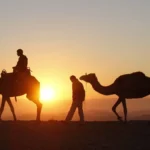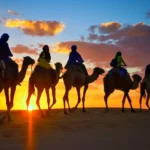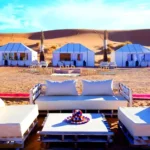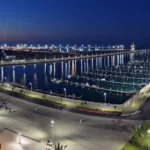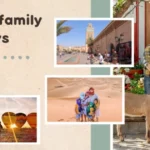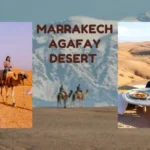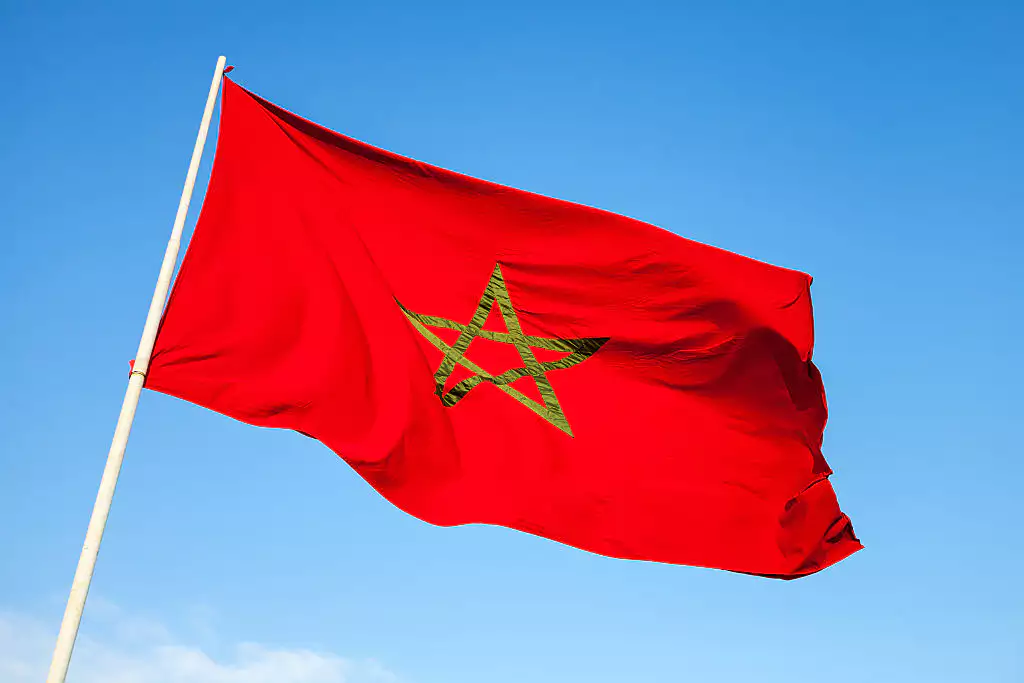
The national flag of the Kingdom of Morocco is one of the country’s great symbols, along with the Jerifian anthem, the coat of arms – in which two lions hold a green pentagram, the Atlas Mountains and a rising sun on a red background – and the country’s motto, ‘Akuch, Amur, Agllid’, which translates as ‘God, Homeland, King’.
On public holidays, the streets are decked out in red and green. Moroccans consider themselves patriotic and have a deep respect for their flag, which for them symbolizes not only freedom, but also their independence, and a reflection of their history and culture.
Composition and symbolism
The flag of Morocco has a red background, on which is superimposed a pentagram or five-pointed star in green. The red and green colors, traditionally associated with Arab flags, are not chosen at random and have their symbolism.
Red, one of the quintessential Arab and Moroccan colors, recalls the descendants of Mohammed. It shows strength, courage, and bravery in its association with the Alawite dynasty, and is considered the color of victory on the battlefield.
Each of the points of the star alludes to one of the pillars of Islam that mark the life of every Muslim because they are precepts or obligations that must be fulfilled.
These five are the profession of faith (one can only believe in one God, Allah, and Muhammad is his prophet), prayer five times a day, almsgiving, fasting during the month of Ramadan, and pilgrimage to Mecca, whenever possible, at least once in a lifetime.
The green of the pentagram is the traditional shade of Islam, as it is the primary color of Islam, alluding to paradise in the Qur’an. On the flag, it is a symbol of hope, joy, wisdom, peace, and love, as well as a reminder of the religion of the majority of the population.
Evolution of the flag
The history of the Moroccan flag is long and, at some points, confusing, which has led historians to debate over the years about aspects such as its true origin and its creator, although all agree that the first time it was raised was in 788. It was an all-white flag of the Idrisid dynasty, which was linked to the history of Morocco from 780 to 974.
The Almoravids, from 1070 to 1147, brought with them a new flag, which, on the basis of the white, included a text in Arabic. However, we do not find a red flag until the Almohad Caliphate, which not only changed the base color but also added a black and white square in the center. In 1244, the Merinid dynasty continued to retain the red color, but the square was replaced by a rectangle with gold outlines. Inside it, for the first time, was an eight-pointed star, the result of combining two squares.
It was the Alawite dynasty that, in 1666, promoted a simple red flag, which during the French protectorate, from 1912 onwards, was completed with a five-pointed star. On 17 November 1915, under Sultan Youssef Ben Hassan, the star was incorporated by royal decree and became the official flag of Morocco. But in the northern part of the country, under Spanish rule, it was different and included a green field in the upper left-hand corner, with a white star inside. In contrast, in the international zone of Tangier, the flag was red, with a coat of arms on the left side and a green five-pointed star on the right side.
With independence and the end of French and Spanish rule, Sultan Muhammad V adopted the current flag of Morocco and raised it on one of the pavilions of his palace in Rabat, making it a symbol that can be seen today at official festivities and institutions.

Flags of the different provinces
Morocco is divided into 12 regions, with 13 prefectures and their corresponding provinces. Their flags have figurative elements reminiscent of their culture and history.
All the flags of Morocco’s provinces are different from each other, although they have some common elements. The color green, typical of Islam, is one of the most common colors, combined with others such as blue, yellow, white, orange, and red, which is the basis of the national flag.
In some flags, such as those of the provinces of El Kelaa des Sraghna or Tan-Tan, it is a simple combination of colors in vertical stripes, although horizontal stripes predominate in almost all flags. In some cases, the zigzag appears, as in the Beni Melal or Ifrane flags, probably because of their mountainous character.
Also common to many of them is an inverted coat of arms with symbolism inside, ranging from architectural or natural elements typical of the province to objects related to local culture. Horseshoe arches, rising suns, sawteeth, citadels, horses or lions, native fauna, or flora share the coat of arms, in some cases offering a very striking result due to their composition or distribution, such as those of Ifrane, Tiznit, Beni Melal, or El Aaiún.

Curiosities about the flag
The ratio of the Moroccan flag is 2:3, and according to Article 7 of the Constitution, the diameter of the star must be one-third of the length. In addition, the regulations state that the flag must be made of bright red, opaque material, with the star visible, woven into the fabric, and with one end of the pentagram pointing upwards. It so happens that most Arab flags are red in color and are usually associated with the United Arab Emirates, although Morocco is not part of the United Arab Emirates.
The star, also known as Solomon’s seal, which reminds many of the Star of David on the flag of Israel (although the latter has six points), has its origins in Babylon. For some historians, it symbolizes the ring that God gave Solomon to subdue demons and to be able to talk to animals. Other scholars, however, associate it with Fatima, daughter of the prophet Mohammed.
When Morocco was under French and Spanish rule, the flag could be used on land, but not on the high seas. Later, on Independence Day, Moroccans celebrate not only their flag but also the return of Mohammed V from exile. Since then, the flag has been an integral part of everyday life in the country and is often flown to the accompaniment of the Moroccan national anthem.
To find the largest national flag, one has to go back to 8 May 2010, when in Dakhla, in the midst of the dispute over the Sahara, a flag of more than 60,000 square meters, weighing 20 tonnes, was displayed. In this regard, the rules state that the flag must always be flown in the correct position, and never lower or higher than the flag of another nation as a sign of respect. When it is damaged or torn by wind or adverse weather conditions, the way to remove it is to burn it in a private place, with full honors.
Moroccans love their flag, a national symbol that has changed over the centuries as Morocco’s history has evolved, to the point where the red color and the green five-pointed star are symbolic and meaningful to the local population.

